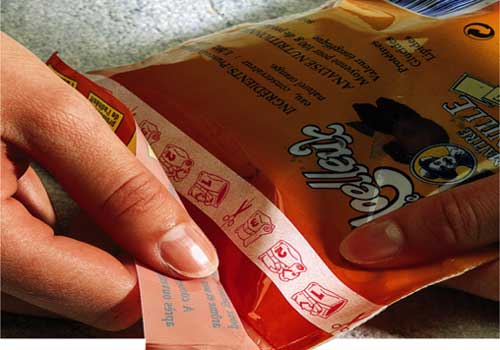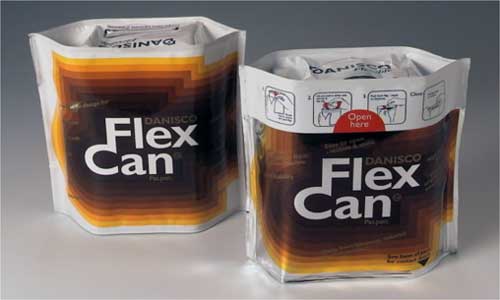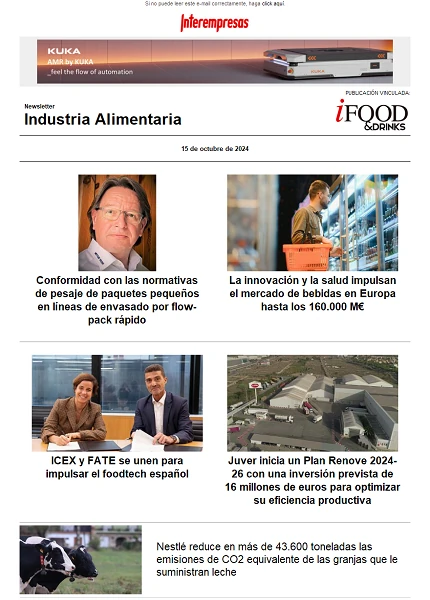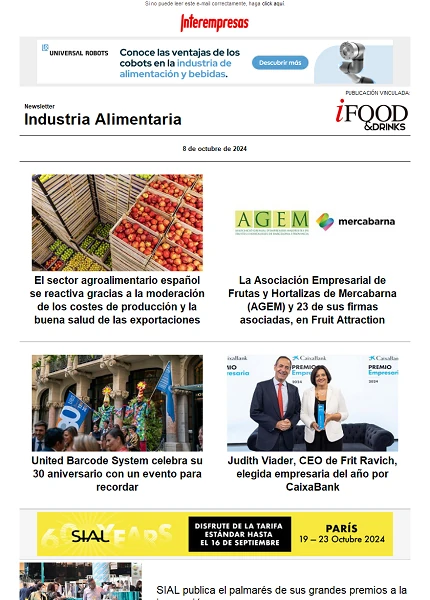Need for and desirability of the packaging

Traditionally the containers and packaging have had a very clear functions. One of the most basic is the hold, i.e., accommodate the product inside, resist the mechanical aggressiveness of the product and the pos-packaging treatments. But they must also conserve, maintain the properties of the food, interactions with food. A third basic function is protection, since they must maintain the integrity of the product and often offer barrier before the O2, CO2, water vapor and light. The factors influencing the barrier properties are the type of polymer, thickness, the crystallinity, the humidity, the orientation, the temperature and the number of push-ups.
Nowadays the plastic containers are very usual multi-layer, with properties as follows: anti-fog, peelable, retractable, sterilisable, re-closing and breathable.
Are important, also, their appropriate design and printing features, what its facet Communicator is concerned. The packaging must be emotional and give the necessary information, because much depends on these factors the motivation to acquire a certain container. Visual perception is the factor that influence tends to have (marketing). Although 80% of cases the client has already decided what to buy when it enters the establishment. In other cases, in the first minutes and 10 metres distance you motivate decision colors and a short distance, the form. When it comes to touch the product, in 70% of cases, it is likely you consume. This can be summarized as attraction, communication, functionality and experience.
However, traditional roles are no longer sufficient and today, should go a little further. So for example, a current package presents a relationship quality / optimal price, a barrier effect to lower prices and greater speed in the machine for the same price. On the other hand, nowadays a container must be organic, though little in relation to its volume, comply with the regulations in legislation in force and be recoverable or recyclable. Their use should be simple in order to captivate clients through the comfort, ease of opening and easy disposal. As far as possible, a container must be re-closing.
The packaging must also allow rapid change of formats and packaging at high speed, so be very reliable (supply, service and competitiveness insured).
Design: Packaging recerrables
-How does work?
They have three laminated layers and a special adhesive. The principle of the Reclose is based on the layer of PE from the top to the thermosealing stays attached to the tray, leaving adhesive exposed in the area of sealing when the container is opened. Resealed is carried out simply by pressing lid and tray together.
-Types:
- ZIP seal: lidding of seamer band
- Rigid elements: plugs, tweezers
- Easy pack, tape adhesive re-closing, sealing Lapseal, vertical and horizontal machines
- Reclose: Film re-closing
- Flexcan: Packaging for solids that replaces the traditional Tin. Duct tape + packaging design.
If we look at the packaging from the point of view of the different properties that must be provided, depending on the product, should take into account that, in general, all deteriorate by oxygen. Barrier material in general multilayer of different films have different structures depending on the type of conservation and/or addition of gas here come into play. A packaged food can suffer biodeterioration and abiotic degradation. The biodeterioration may be caused by bacteria, molds, and yeasts and insects. Abiotic degradation leads to reactions of pardeamiento, hydrolytic reactions, enzymatic reactions, oxidation of fat and is conditioned by: or2; CO2; water; light and temperature.
Then see various examples of foods and their most appropriate packaging.
Coffee
You need to detach the CO2 originated in the roasting process that in the case of grain lasts approximately 4 weeks, and you should not receive light or oxygen. The materials commonly used is a three-layer composed of PET / to the / PE. However, in this optimal composition also can be metallic material (evaporation of aluminum in high vacuum on polyester or polypropylene). Para eliminate CO2 joins shunt valves for Amcor has been incorporated into the film.
Candies and sweets
In general they do not need any special packaging that sugar is a good preservative, as well as the rest of the sweeteners that are incorporated. In this respect it should be recalled that, in certain ancient civilizations, conservation, especially meat, was made with honey. They are often used polypropylene or PVC in the individual involved (replacement of cellophane, currently unused by its high price). Products which contain cocoa is usually placed a metallic to preserve the aspect and the sensory profile of the product. In fact, major chocolate manufacturers even used cellophane metal due to its excellent conditions of barrier. On the other hand, the energy bars often used a three-layer as a bilayer. The welding of these wrappers is usually done using the technical 'cold seal' consisting of an adhesive of food use that sticks by contact.

Snacks
Different options are distinguished within the varied world of nuts, potatoes or pickles. Thus, for pickles, especially for the olives, used glass, tinplate as well as flexible material. The latter must be a material barrier, usually polyester saranizado either polyethylene see. The use of this material has its advantages because before packaging the volume it occupies is minimal with respect to the other two. For nuts is also interesting if you want an extensive conservation because here the oxygen oxidizes (quickly goes lipids), this is a scan-based gases CO2 (20%) and N2 (80%) or simply 100% n2 to remove the oxygen.
Meat and dairy
In this section are considered medium and high barrier materials. Difference between pasteurizables, with working temperatures below 100 ° C and retort with working temperatures exceeding 123 °. The type of product, time, and temperature are critical parameters to preserve its aspect. Sterilisable materials are three and four layers, queues are special as well as the Red interlaminadas. important Es the application of vacuum or gas variable depending on raw meat (a mixture of N2/ CO2 and O2) or boiled (CO2 and N2).
Special materials
Aluminium oxides and oxides of silicon, are materials of high barrier that they behave like the metallic but they are transparent and whose conditions allow to see the product. They are characterized by presenting a barrier to higher values of moisture. They are suitable for microwave and retort. However, have the following disadvantages: are expensive and very sensitive to high tensions.
New Flexcan of Amcor Flexible packaging
Container for easy opening, re-closing, which remains standing; ideal for the packaging of powder, granules, dry, food products or not. It keeps its original form and the trade mark durante su utilización.
It is an alternative to cans and bags in box, presenting itself as a single package without secondary packaging which offers various benefits both to the packer and the end consumer of the product. It can be provided in several formats depending on the needs of the product.

Laminates with polyamide
- Polyamide-polyethylene: packaging of meat, dairy products, salted, dried fruits, etc.
- Polyamide-polyethylene: for packaging of meat products cured and cooked, dairy, salted etc.
- Polyamide-polypropylene: for packaging of pre-cooked, sterilized vegetables, etc.
- Polyamide Bio-polypropylene: for packaging of pre-cooked, sterilized vegetables, etc.
Laminated with polyester
- Poliéster-polietileno: For packaging of pastas, salted, dried fruits, industrial applications, etc.
- Poliéster-PE/EVOH/Pe: for packaging of meat products cured and cooked, dairy, nougat, nuts etc.
- Poliéster-poliamida - polyethylene: for packaging of meat products, sausages, etc.
- Polyester-polypropylene: for packaging of pre-cooked, sterilized vegetables, etc.
- Polyester-aluminio-polietileno: for packaging of products dehydrated, dietary, milk powder, juice, coffee, yeast, agrochemicals, etc.
- Poliéster-poliéster MET-polyethylene: for packaging of nuts
- Poliéster-PE - peelable: for lids for ice cream.
Laminated with polyester and PVdC
- Polyester-PVdC-polyethylene: for packaging of meat products, cooked and cured, smoked, dried fruit, sauces, pasta, etc.
- Polyester-PVdC-polypropylene: for packaging of meat products, sauces, covers of cooked dishes, etc.
Laminates with metallic polyester
- Polyester Met-polyethylene: packaging of meat products, cooked and cured, smoked, powdery, aromas, covers of ice creams, etc.
- Polyester Met-polypropylene: for packaging of vegetables, sauces, etc.
- Polyester Met-Virobar: for packaging of spices, juices, etc.
- PET Met-Pe-peelable: for yogurt lid.
Laminates with OPP
- OPP-polyethylene: packaging of rice, vegetables, snacks, etc.
- OPP-polypropylene: for packaging of rice, vegetables, snacks, pasta, etc.
- OPP-OPP: packaging of rice, vegetables, snacks, pasta, biscuits, products of pasta, etc.
- OPP-Alu-PE: for packaging of coffee, agrochemicals, etc.
- OPP-paper-PE: for packaging of coffee, agrochemicals, etc.
Laminated with paper
- Papel-PE - Alu-PE: for packaging of coffee, agrochemicals, pharmaceuticals, cosmetics, wet wipes, etc.
- Role-Met OPP: for packaging of snacks
- Role-Met OPP-PE: for packaging of snacks
- Papel-Pe: For packaging of sugar, salt, cocoa powder, ice cream, etc.
- Role-Met PET-varnish: for cover of yoghurt.
Laminated with aluminium
- Aluminio-polietileno - aluminium: for packaging of wine and sparkling cava (champagne) with capsules.
- Aluminio-polietileno - aluminum-polyethylene: for packaging of wine and sparkling cava (champagne) with capsule
- PEEL aluminio-PE: Yogurt and ice cream lids.








